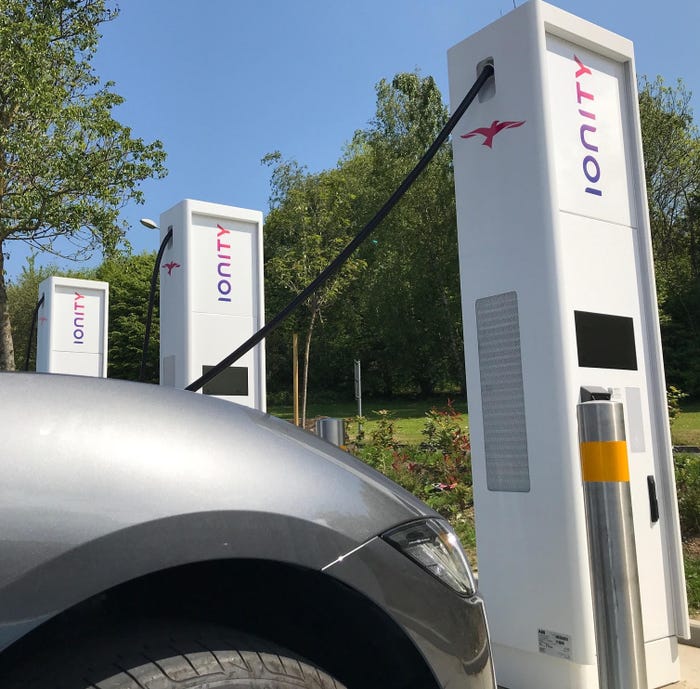DOT Grants Back Development of Autonomous-Vehicle Industry
The grants emphasize research in urban, suburban or rural areas and include freight, personal mobility and public transportation.

On Dec. 21, 2018, the U.S. Department of Transportation released a Notice of Funding encouraging municipalities, states or other organizations to submit detailed proposals to conduct autonomous-vehicle research and development.
Applicants faced stiff competition with a total of 73 applications nationwide and a pool of $60 million at stake. DOT’s statement of purpose emphasized that safety was its top priority, including data collection for safety analysis and rule-making. The grants will give winning stakeholders a leg up in the regional autonomous vehicle competition.
DOT ultimately awarded funding to eight projects in mid-September 2019. Each of the winning proposals has a unique focus and fulfills a niche area of research. DOT aims to study a broad range of autonomous-vehicle applications in a variety of settings. Thus, awards emphasize research in urban, suburban or rural areas and include freight, personal mobility and public transportation. The eight projects are outlined below.
Contra Costa (CA) Transportation Authority will develop three projects focused on elderly and differently abled populations that struggle with mobility. The first demonstration will increase transit accessibility to the elderly, utilizing shared autonomous vehicles within a gated community that will functionally help elderly individuals with the first and last miles of their trips. The second project will provide on-demand, wheelchair-accessible vehicle shuttle service to a local hospital. Researchers hope to reduce appointment absenteeism while providing patients a sense of self-sufficiency. The final project will utilize the I-680 corridor and prepare it for future autonomous-vehicle use. The 2-mile (3.2-km) section of highway will be used to test high-speed autonomous vehicles.
The Ohio Department of Transportation will partner with DriveOhio, the Transportation Research Center (TRC), Ohio State University, University of Cincinnati, Ohio University, Bosch, Columbus Yellow Car, AutonomouStuff, Robotic Research, the City of Athens, Foundation for Appalachian Ohio, Buckeye Hills Regional Council and the Diabetes Institute at OU. While some research will take place at TRC’s 4,500-acre (1,820-ha) facility, the project also will utilize 32 counties of Ohio’s rural Appalachian region. The project will develop autonomous-vehicle technology capable of overcoming the unique challenges presented by rural roadways, including faded pavement markings, limited shoulders, rolling terrain, unclear or nonexistent edge lines and gravel roads. This project also aims to address medical access deficiencies present in rural America.

Northman Tod_3
The City of Detroit will leverage its Mobility Innovation Office and partner with the Mcity Test Facility, American Center for Mobility, Michigan DOT, University of Michigan’s Transportation Research Institute, Michigan Economic Development Corp., Wayne State University, Ford Smart Mobility and Deloitte Consulting. Ultimately, the project aims to roll out a fleet of shuttle vehicles in urban Detroit to move differently abled and senior populations that experience barriers to mobility. The low-speed shuttles used in this demonstration will focus on transporting people to medical appointments, grocery stores, social activities and civic engagements.
Texas A&M’s demonstration comprises a broad two-part proposal seeking to explore urban, suburban and rural autonomous vehicle applications around the nation, utilizing private-sector partners including Nvidia, General Motors and National Instruments. The first project will integrate multimodal transportation on college campuses (i.e., mixed-vehicle environments, including cars, pedestrians and cyclists) with driverless technology that can safely navigate these challenges. Rather than treating these travelers as objects to be avoided, this proposal hopes to integrate the decision-making logic of other modes of transportation into the AI that controls Connected and Autonomous Vehicles. Combined with innovative low-latency vehicle-to-everything communications, this project will protect vulnerable travelers. The second experiment aims to solve problems associated with HD mapping, unclear road markings, inaccurate or nonexistent road signs and poor pavement quality that plague rural roadways.

Sanders Emmanuel (1)_0
Iowa State University and Iowa DOT are partnering on a project called “Automated Driving Systems for Rural America.” This project will focus on unique challenges for driverless technology on rural roads, including climate, weather, road variance, slow-moving traffic, sharp curves, steep grades, limited visibility and loose surfaces.
Stakeholders in Virginia were awarded two separate federal Automated Driving System Demonstration Grants. The first project will inform DOT and industry leaders involved in the safe rollout of autonomous fleets by utilizing mixed fleets (combination of autonomous and traditional vehicles). This demonstration will culminate in an uninterrupted trip from San Francisco to New York across I-80 using L5 autonomous technology – the first long-haul proof of concept of its kind.
Virginia’s second project will develop technology that can adapt to highly dynamic interactive scenarios, including work zones, signalized intersections and public safety officers directing traffic or partially obstructing lanes after an accident.

Ehrenschwender Lex_0
Finally, Pennsylvania DOT will partner with Carnegie Mellon University and Penn State University to integrate ADS technology into the physical infrastructure of work zones. By utilizing innovative connected paint and coatings, dedicated short-range communications and cellular vehicle-to-everything connectivity, researchers hope to allow ADS vehicles to “see” construction workers, pavement markings, traffic control devices, and construction vehicles.
Tod Northman (top, left), a partner at Tucker Ellis, focuses on corporate and emerging tech law and transactions. Emmanuel Sanders (middle, left) is an associate at Tucker Ellis focusing on business and tort litigation. Lex Ehrenschwender (below, left), an associate at Tucker Ellis, has worked on a variety of issues related to motor vehicles.
About the Authors
You May Also Like



.jpg?width=700&auto=webp&quality=80&disable=upscale)